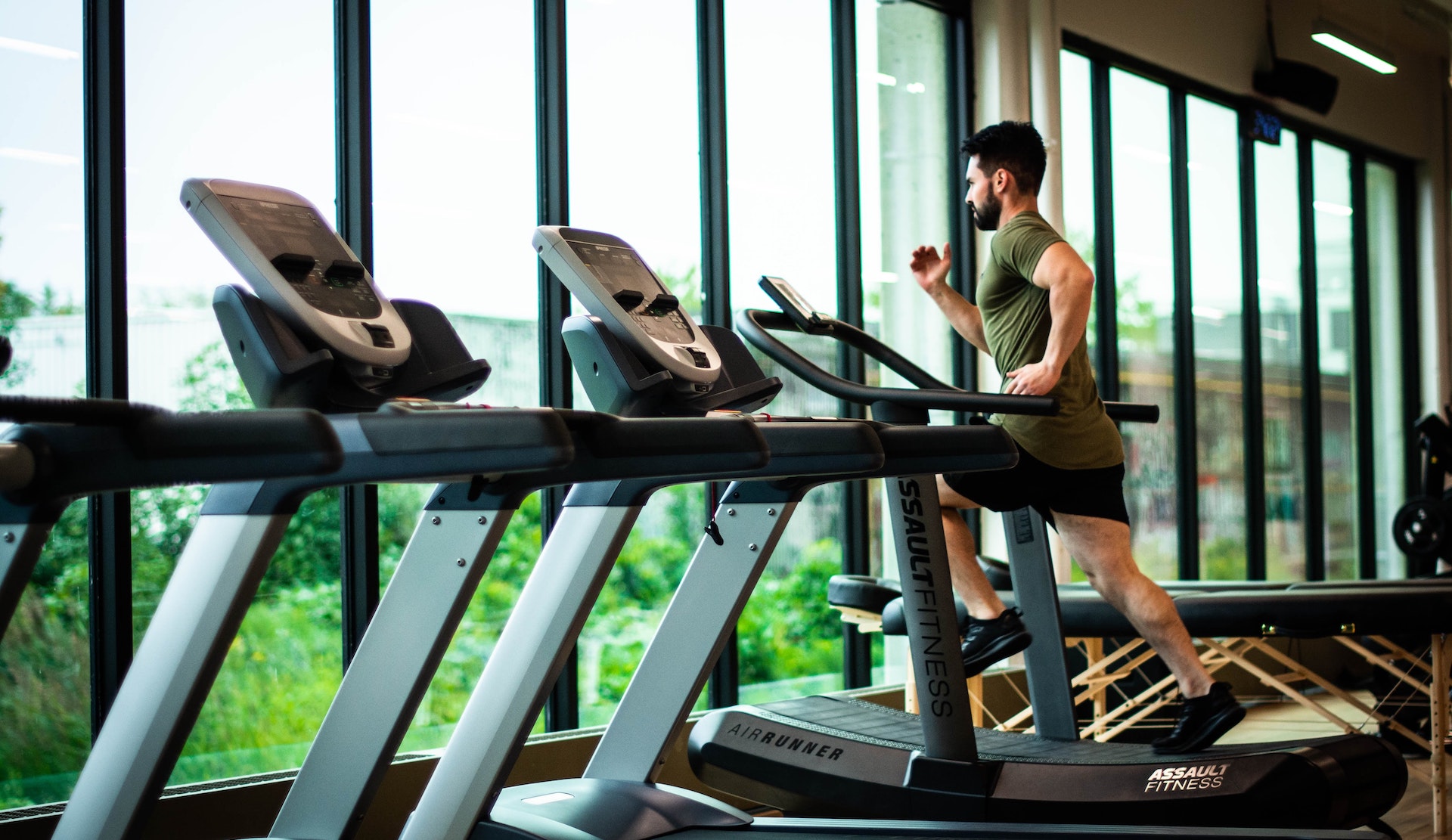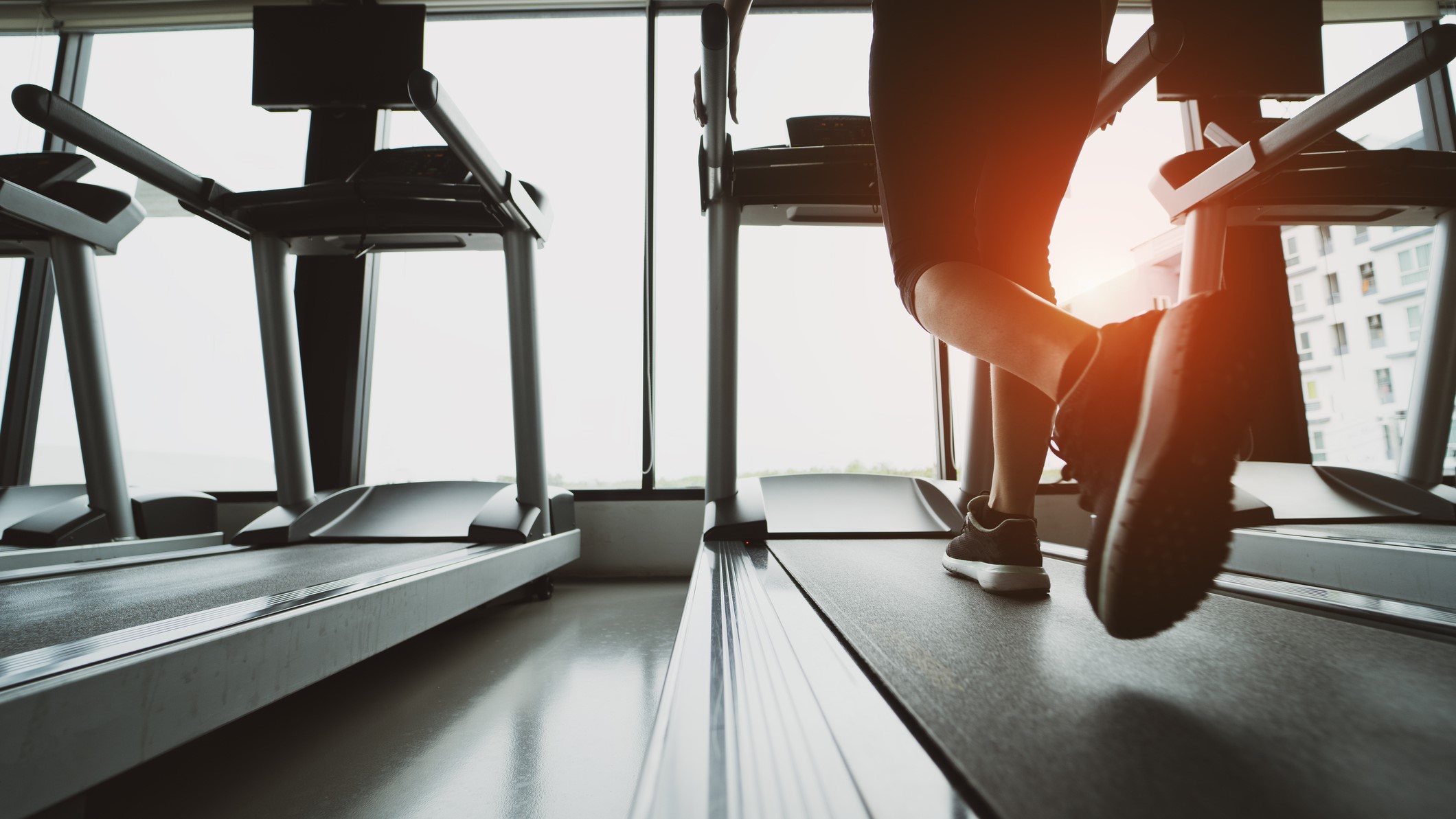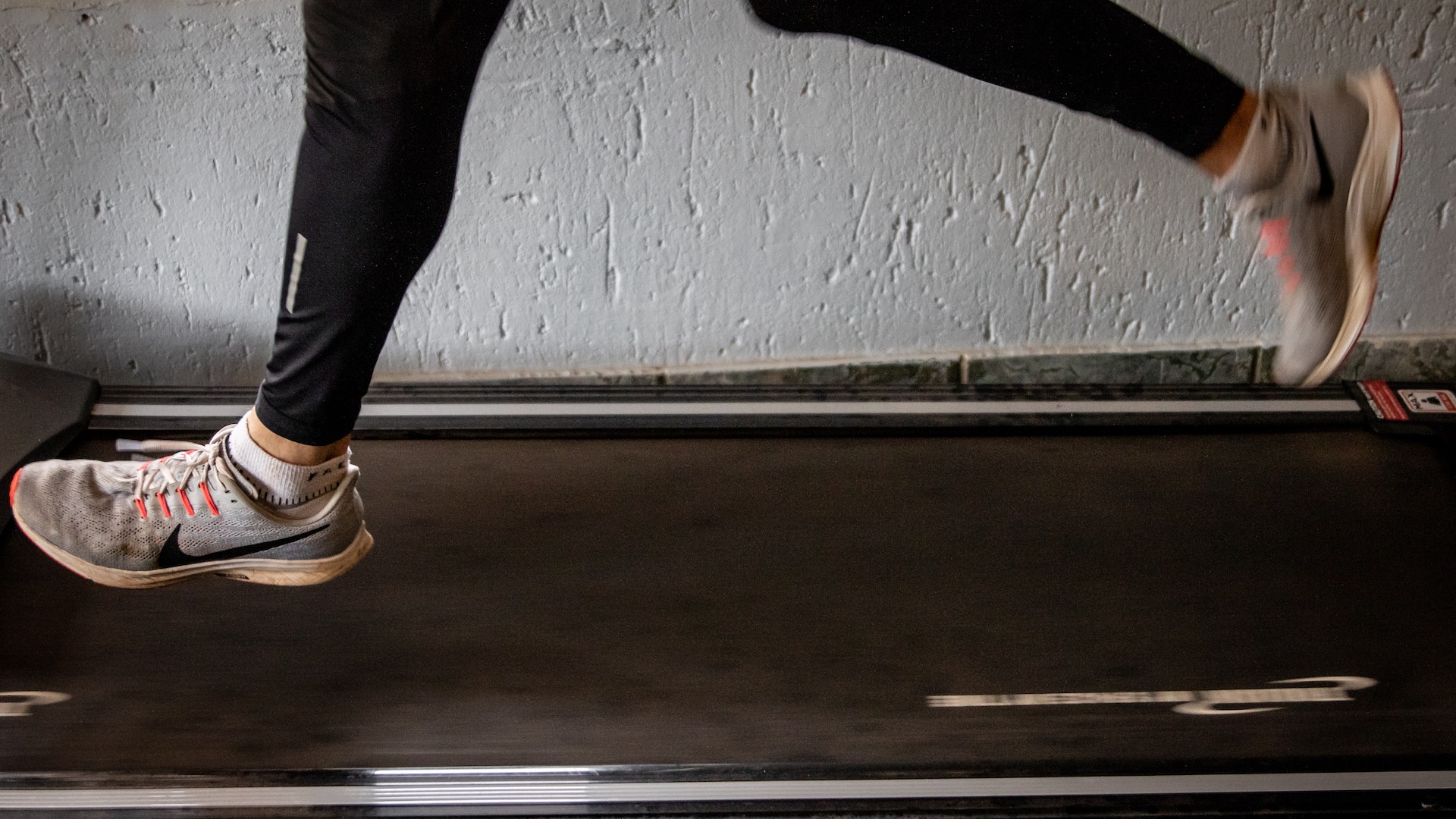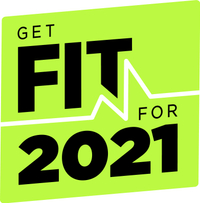

A treadmill is a fairly one-dimensional piece of fitness equipment, right? Hop on, set a steady pace and pound out the miles for hours on end. Not exactly, because in your quest to get fitter, stronger and leaner in 2021, it pays to mix things up. Read on, compadre, and ingest some science.
While gentle jogging and other forms Low-Intensity Steady State training (or LISS for short) has been proven to achieve positive health results, improve cardiovascular fitness and burn fat, these workouts take a long time, and, unless you want to occupy your mind with a book or film, can get immensely boring where treadmills are involved.
High-Intensity Interval Training (HIIT), on the other hand, is scientifically proven to burn more calories - and continue to burn calories long after the workout - meaning participants can cram more effort into a short period of time and see the same results as, say, two hours spent light jogging on the best treadmill you can lay your hands on – or feet, strictly speaking.
On a tight budget? Check out T3's roundup of the best cheap treadmills. Because it doesn't have to cost the earth to get fit indoors. You might also want to take a look at our best folding treadmills guide if you have limited space to get fit indoors.
While we suggest that newcomers to fitness avoid overly intense HIIT sessions, to begin with, we do think that mixing up your treadmill routine is an excellent way of keeping things fresh and, ultimately, keeping you coming back for more.
With that in mind, using the treadmill as part of a wider circuit of exercises can be an excellent way of livening things up. After all, online workout studio Peloton has done exactly that with its latest Peloton Tread product. Essentially a treadmill and a few pieces of light equipment, it creates a mini fitness ecosystem that allows its online trainers to target every muscle group in the body, leading to a fitter, more toned and stronger participants.
But even if you’ve got a standard, non-connected treadmill stashed away in the garage; you can make the most of these workouts to add some variety, as well as tone up areas that would otherwise be neglected during a gentle jog.
Sign up to the T3 newsletter for smarter living straight to your inbox
Get all the latest news, reviews, deals and buying guides on gorgeous tech, home and active products from the T3 experts
How to perform the best treadmill workout
It seems ridiculous saying this, but you’ll need a treadmill. On top of that, it’s best if you have a treadmill set-up where you have a bit of space around to be able to hop off and get down for some press-ups, burpees and other bodyweight exercises.
Aside from that, we’ve detailed the format in the workouts themselves, so follow along be prepared to work up a sweat. We’ve also ranked this in order of difficulty (1-5), with some of the earlier workouts likely best for beginners, as they don’ rely on too much exercise knowledge and won’t leave you in tatters for days afterwards. After all, you need to want to come back for more, otherwise, it’s pointless.
A quick word on safety: make sure you have a large bottle of water and/or isotonic sports drink nearby and keep a towel handy for mopping up a sweat. A slippery treadmill deck is not what we are aiming for here people.
Above all else, take things at your own pace and be your own judge when it comes to treadmill deck speed and the amount of inclination. If it feels uncomfortable or out of control, slow it down a little. The same goes for any unusual sensations or pangs of pain: if anything hurts, cancel the workout and address the issue before coming back for more.

Best treadmill workout
1. Run/Walk with Inclines
This is a great workout for beginners, as it breaks tedious 30-minute sessions into small blocks and offers a challenge without proving over-strenuous. Your treadmill will need to have an incline adjustment feature but don’t worry if it doesn’t, try one of the other workouts instead.
Top tip: to make this workout harder, simply increase the incline over the stated figure until you are essentially running up a hill.
0-3 minutes: warm up with a fast walk, slowly increasing to a gentle jog
3-5 minutes: Crank the incline up to 1% and walk at a steady pace. Avoid using handles
5-7 minutes: Reset the treadmill deck and increase speed to a gentle jog
7-9 minutes: Increase incline to 2% and walk at a steady pace. Avoid using handles
9-11 minutes: Reset the treadmill deck and increase speed to slightly faster than a gentle jog
11-13 minutes: Increase incline to 4% and walk at a steady pace. Use handles if you need to
13-15 minutes: Reset the treadmill and slow speed down to your original gentle jogging pace
15-17 minutes: Increase the incline to 5-8% and walk, using the handles for stability
17-19 minutes: Lower the treadmill and return to your jog
19-21 minutes: Increase the incline to 2% and walk avoiding any handle use
21-25 minutes: Lower the deck and jog for this last phase, increasing the pace gradually.
21-30 minutes: Cool down by slowly decreasing the speed until you are at a slow walking pace.
Rehydrate, stretch and relax. That’s the first of the treadmill workouts completed.

2. The Pace Curve
Picture the running pace of this workout as a classic upside-down U on a graph: that’s exactly what we are aiming for here, with running speed gradually building up to a flat-out sprint for a very short period of time, before relaxing back towards a waking pace.
Top tip: more experienced runners will be able to maintain a much faster pace for longer, so look to hit a genuine sprint at the very peak of the pace curve.
0-3 minutes: Warm up by gradually increasing the speed to a fast walking pace
3-5 minutes: Gradually increase the deck speed until the walk feels like it’s about to break into a jog
5-8 minutes: Increase the deck speed until jogging. The heart rate should be rising now
8-10 minutes: Increase the rate again until you feel you have reached a quick pace
10-11 minutes: Crank up that speed for a very fast run. You’ll likely not be able to maintain a sprint for a minute, so keep the speed at an achievable rate.
11-15 minutes: Decrease the speed considerably to a manageable jog, allowing you to catch your breath
15-18 minutes: Start to slow the deck down to a quick walking pace
18-25 minutes: Keep decreasing the deck speed every minute until the treadmill comes to a complete stop.

3. Leg Strength Builder
This workout will require effort on the treadmill followed by the ability to hop off and perform squats nearby. If you have a kettlebell or dumbbell, that’s even better, as you can increase resistance on the squat to make it harder.
Top tip: Have a timer nearby, set-up for 60-second intervals, as that’s how long you will be squatting for
0-3 minutes: Warm up by gradually increasing the speed on your treadmill. Aim for a jogging pace
3-4 minutes: Safely exit the treadmill and perform air squats for 60 seconds
4-8 minutes: Jump on the treadmill and build speed back up to a fast running pace
8-9 minutes: Safely exit the treadmill and perform air squats for 60 seconds or add a lightweight to each hand
10-13 minutes: Jump on the treadmill and build speed back up to a fast running pace
13-14 minutes: Again, exit the treadmill and perform controlled squats for 60 seconds. Increase the weight if you can
14-18 minutes: Jump on the treadmill and build speed back up to a fast running pace
18-20 minutes: Gradually slow the deck down to a walking pace and then set it at a speed where you can comfortably lunge
20-26 minutes: 3 x sets of 60 seconds walking lunges followed by 60 seconds normal walking.
26-30 minutes: Cool down with a regular walking pace, slowing to a stop

4. Fartlek Sprints
Stop sniggering, fartlek means “speed play” in Swedish and it’s a form of interval training favoured by runners looking to increase cardiovascular fitness, build muscular strength and get faster with random sprint intervals.
It works best out on the open road, where you pick a landmark and run towards it at a fast pace, before slowing back down to a gentle jog or power walk. It can also be performed on a treadmill but we have to get a little creative.
Top tip: Set your fartlek training to music with a good set of fitness headphones. Pick a point in a song (a chorus for example) as your sprint period and go guns blazing until it ends. Or, wait for a bass drop in a dance tune and speed the run up here, slowing back down when the song mellows or your legs give out.
0-10 minutes: Warm up with a walk, gradually increasing to a jog and then staying steady at a solid running pace
10-11 minutes: Crank the pace up to a fast run (or a 5K race pace if you know what this is) and hold for around 100-200m - or around 30 seconds. You could also time this to music (see tip above).
11-15 minutes: Slow the pace right down to a fast walk
15-16 minutes: Again, increase the pace to your fastest possible and hold it for around 30 seconds
16-30 minutes: Continue this random speeding up and slowing of pace, making sure you don’t stay walking and jogging for too long. The key is to spike the heart rate with short, sharp sprints and then recover for as long as you need before going again.

5. HIIT monster
This one is for the freaks out there that like to get the pulse positively racing and lungs busting, as it requires short, sharp intervals on the treadmill, as well as strength training techniques for a full-body blaster.
Top tip: A Curved Manual Treadmill (CMT), like Assault AirRunner and Technogym SkillMill, are both fantastic for a workout like this, as you won’t have to wait for a traditional treadmill motor to speed up when carrying out the punishing sprints.
0-10 minutes: Spend the first few minutes with an active warm-up, stretching and activating the chest, shoulder, back and leg muscles. Jump on the treadmill and increase the heart rate by increasing speed gradually.
10-11 minutes: Safely exit the treadmill and perform 40 seconds of slow and controlled push-ups. Allow 20 seconds to recover
11-13 minutes: Jump on the treadmill and gradually increase the speed until you are at flat-out sprint pace
13-14 minutes: Safely exit the treadmill and perform 40 seconds of burpees, making sure to include the jump. Allow 20 seconds to recover
14-15 minutes: Sprint on the treadmill
15-16 minutes: Exit the treadmill and perform 40 seconds of air squats. Allow 20 seconds to recover
16-17 minutes: Sprint on the treadmill
17-18 minutes: Exit the treadmill and perform 40 seconds of mountain climbers. Allow 20 seconds to recover
18-19 minutes: Sprint on the treadmill
19-25 minutes: Gradually decrease the speed of the treadmill until you come to a complete stop. Remember to cool down properly and stretch after this one.

This is part of T3's Fit for 2021 programme, which will be running throughout January. We aim to bring you tips on diet, lifestyle and exercise that will help you shape up for what is certain to be a difficult year. One thing we can guarantee: it WILL be better than last year. And hopefully we'll help you get the most out of it.
Leon has been writing about automotive and consumer tech for longer than he cares to divulge. When he’s not testing the latest fitness wearable and action camera, he’s out in a shed fawning over his motorcycles or trying not to kill himself on a mountain bike/surfboard/other extreme thing. He's also a man who knows his tools, and he's provided much of T3's drills coverage over the years, all without injuring himself.
-
 Google Pixel Watch 3 just got a potentially life-saving update in the US
Google Pixel Watch 3 just got a potentially life-saving update in the USThe latest update brings advanced heart monitoring to American wrists
By Matt Kollat Published
-
 3 overrated shoulder exercises, according to a fitness expert (and what to do instead)
3 overrated shoulder exercises, according to a fitness expert (and what to do instead)Sculpt 3D shoulders whilst minimising injury with these three alternative exercises
By Bryony Firth-Bernard Published